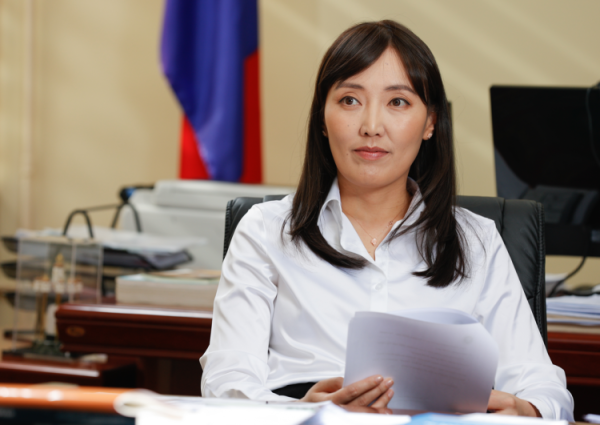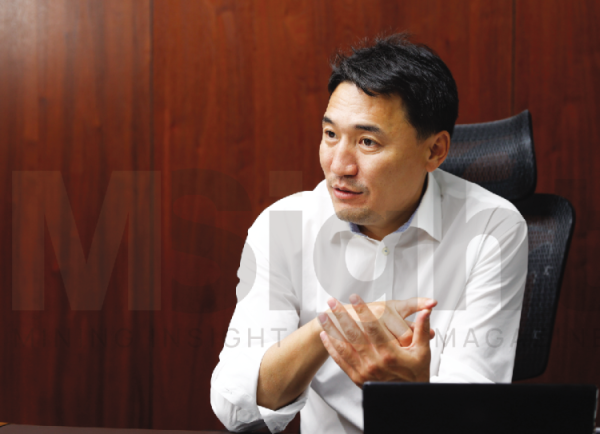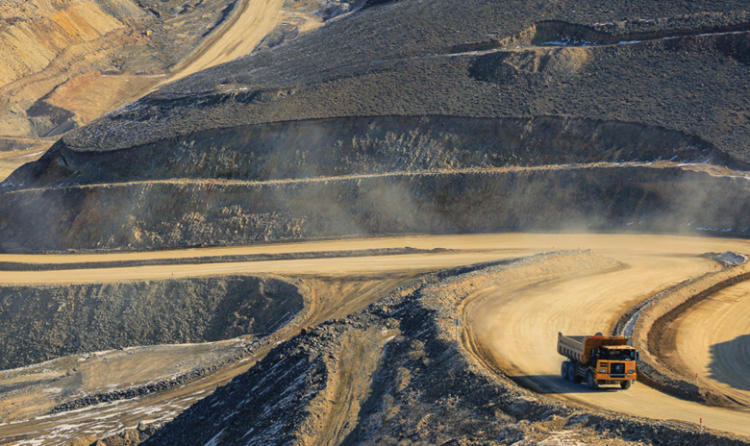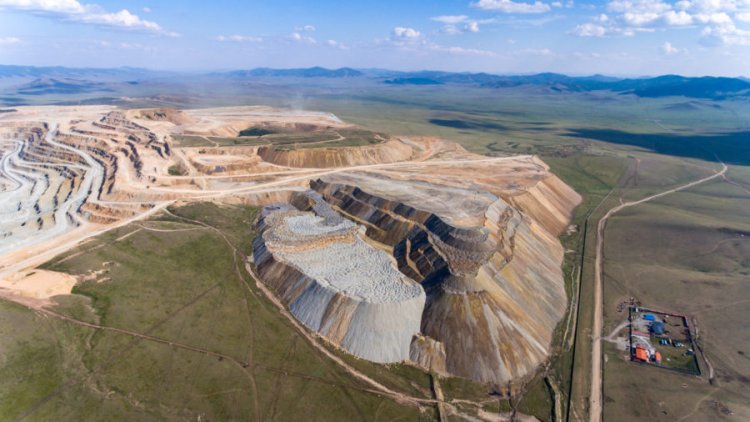 On May 24, 2023, a scheduled open discussion took place to introduce the revised draft of the Minerals Law, which was developed by a working group of the Ministry of Mining and Heavy Industry. The purpose of the discussion was to gather opinions and conduct research on determining the appropriate rate of mineral resource royalties. The session began with a presentation that outlined the amendments incorporated in the Minerals bill. The presentation covered the outcomes of the earlier discussion held on May 4, 2023, as well as the proposals put forward by relevant companies.
On May 24, 2023, a scheduled open discussion took place to introduce the revised draft of the Minerals Law, which was developed by a working group of the Ministry of Mining and Heavy Industry. The purpose of the discussion was to gather opinions and conduct research on determining the appropriate rate of mineral resource royalties. The session began with a presentation that outlined the amendments incorporated in the Minerals bill. The presentation covered the outcomes of the earlier discussion held on May 4, 2023, as well as the proposals put forward by relevant companies.As an illustration, an exploitation license holder is not obligated to obtain a separate license for beneficiation when engaging in beneficiation activities. However, during the discussion, participants expressed concerns about the substantial increase in fees for exploration licenses, which is increased by 70-120 times.
This decision was perceived as discouraging for domestic exploration companies. In response, the working group clarified that the increased fees are in line with international averages and are implemented as part of the policy framework. They further assured the participants that they are open to considering thoroughly researched proposals regarding exploration license fees. Allow me to outline the modifications presented in the draft law concerning the following aspects: Exploration License, Exploitation License, Beneficiation License, Mine and Plant Closure Activities, and Mineral Resource Royalties.
Exploration License
• Under the current legislation, exploration activities were exclusively funded by the state budget. However, in the revised version, it is stipulated that exploration can also be carried out using private funds. If potential mineral prospects are identified through exploration efforts, a selection process will be introduced to invite enterprises to apply for exploration permits. This process will involve announcing the opportunity and issuing permits to qualified entities.
• The bill specifies that the size of an individual licensed area should not exceed 13,900 units or 100,000 hectares. This represents a change from the current maximum area allowed under the existing Minerals Law, which is 150,000 hectares.
• Exploration license will be issued in two types: "application and selection" and exploitation license will be issued by "selection". In doing so, it will be granted by selection in areas where basic geological research has been done, and by application in other areas.
• The fee for an exploration license has been revised to MNT 6,500, MNT 13,000, and MNT 52,000 per hectare, based on the year of operation. This adjustment represents a significant increase of 70-120 times compared to the previous exploration license fee.
• In addition to the raised minimum exploration costs for areas granted through an application, the fees associated with special permits are also set at a relatively high level.
Exploitation License
• Exploitation licenses shall comply with the following criteria: ∙Defined according to the unit area; ∙Sufficient size for operational activities; ∙Have proven resources; ∙It is prohibited to allocate land from the locality overlapping with the area of special license for use.
• Before obtaining an exploitation license, the following documents must be prepared: ∙Exploration results report – technical and economic basis; ∙Detailed environmental impact assessment; ∙Preliminary mine closure plan; ∙Guaranteed first-year funding for mine closure operations.
• The fee for an exploitation license is MNT 104,000 per hectare per year. However, for limestone, coal, domestically produced, and common minerals, the fee is MNT 14,500 per hectare.
• No land fee is required within the license area. If the license holder uses land outside the area, they must pay the fee stated in the Land Law. This rule applies to both exploration and exploitation licenses.
• An exploitation license shall be revoked in the following cases:
∙The requirements stated in Article 9.1 of this law (permits shall be issued to tax-paying legal entities established under Mongolian laws, following the procedures outlined in this law) are no longer fulfilled.
∙The court has determined that a counterfeit document was produced to obtain, renew, or transfer a license.
∙The annual license fee is not fully paid along with the associated fees.
∙Failure to pay compensation and fees for exploration expenses funded by the state budget, as outlined in the contract.
∙The payment of royalties for mineral resources has not been made within the timeframe specified by this law.
∙The court has confirmed significant environmental damage.
∙The documents outlined in Article 20.6 of this Law (a legal entity that has obtained a license through the selection process shall submit the documents specified in Article 20.2 of this Law to the relevant state administrative body responsible for mineral affairs within one year of receiving the license) were not submitted within the legally stipulated timeframe.
• The license for usage will be issued for 10-20 years, taking into account technical and economic factors. The license can be extended twice for 10 years each, based on the reserves of the deposit.
∙The personnel required for the operation include geologists, surveyors, exploitation specialists, beneficiation experts, and health and safety personnel.
∙The creation of piles without blending topsoil, lowgrade ore, and other minerals.
∙Conduct transportation related to sales following the approved route designated by the authorized personnel.
∙Notify promptly in the event of a resource quantity change exceeding 20 percent.
∙Beneficiation operators holding an exploitation license shall adhere to the requirements and exercise the rights associated with beneficiation activities in a consistent manner.
Beneficiation license
• Beneficiation activities are to be conducted by individuals holding a license for beneficiation. If the holder of an exploitation license is involved in beneficiation activities, a separate beneficiation license, as specified in Article 26.1 of this law, is not required (Concentration activities shall be carried out by a person with a beneficiation license).
• If other parties intend to utilize the derivative deposits resulting from exploitation and beneficiation operations, they must obtain a beneficiation permit.
• A beneficiation license is granted for 10 years and can be extended for the same period.
• In addition to the provisions mentioned in Section 9.1 of this law (Licenses shall be issued to tax-paying legal entities established under the laws of Mongolia, following the procedures outlined in this law), the applicant for a beneficiation license must fulfill the following requirements.
∙Technological and semi-industrial tests have been conducted in accordance with the applicable standards and methods.
∙Possess a valid land use right certificate.
∙The determination of the stock of raw materials for the operation of the concentrator must be made.
∙The user of the derivative deposit must ensure that the resource is registered in the unified state register.
∙The technical and economic basis, as well as the technical design of the concentrator, has been thoroughly reviewed and approved by the Professional Council of Mineral Resources.
∙A detailed environmental impact assessment must be approved; ∙Concentrator closure plan approved
Mine and plant closure operations
• The feasibility study indicates that mining and beneficiation operations will not resume and are planned to be closed.
• In case of force majeure or bankruptcy of the license holder of exploitation and beneficiation, mineral extraction and concentration activities will be closed before the period specified on a technical and economic basis.
• Temporary closure of mineral extraction and beneficiation activities will occur in case of difficult market conditions, unconfirmed reserves determined by exploration during exploitation, difficult mountaintechnical and hydrogeological conditions, and requirements for technological innovation.
• A preliminary mine closure plan will be created prior to obtaining an exploitation license or based on the report of the results of exploration worktechnical, economic basis, and detailed assessment of environmental impact.
• Preliminary plans for the closure of the concentrator will be based on the technical and economic feasibility of the concentrator and the detailed environmental impact assessment report prior to obtaining the concentrator license.
• The holder of the exploitation and enrichment license shall detail the preliminary closure plan every 5 years after the commencement of the production activities of the mine and the concentrator;
Mineral royalties
• The regulations for the payer of mineral resources remain the same as specified in the current law.
• The revenue per royalty is calculated based on the following principles:
∙The revenue per mineral resource royalty for precious metals is determined based on the exchange rate of the day announced by the Bank of Mongolia. The Bank of Mongolia also announces the relevant rates for calculating these royalties.
∙The royalty revenues for copper, zinc, tin, lead, molybdenum, and tungsten are calculated based on the monthly average prices announced by the London Metal Exchange, which serves as the determinant of international market prices.
∙For exports of mineral resources other than those mentioned above, the monthly average of mineral resource royalties is determined based on the rates announced by the domestic exchange of mining products, taking into account the conditions of delivery to the border of Mongolia.
∙In cases where the market price of metal minerals and non-metal minerals exported from the domestic exchange of mining products is not disclosed, the revenue will be calculated based on the monthly average price of the international market.
∙The revenue generated from mineral resource royalties for domestically sold or self-utilized profits shall be determined based on the price stated in the respective mineral sales contract declared by the licensee in the domestic market.
• The royalties for mineral resources are categorized into basic and incremental types, as per the regulations. ∙The baseline amount of royalties remains unchanged and is consistent with the existing law. ∙The mineral royalty fee is structured in a way that it is applied to the portion that exceeds the baseline mineral royalty fee level, as per the regulations.
• Mineral royalties for minerals extracted during experimental, semi-industrial, and industrial operations for experimental purposes shall be paid and reported in compliance with the provisions outlined in this law.
• If there is a stabilization certificate, it will be charged at the rate specified in the certificate. Also, the following changes related to local relations and public participation are included in the Minerals Bill. Community relations at the exploration
• The license holder may enter into a cooperation agreement with the local community in carrying out exploration activities.
• It is forbidden to demand anything other than what is specified in the cooperation agreement with the locality.
• The governor of a Soum or district is responsible for informing the local citizens and the higher-level governor about the exploration activities to be conducted using state budget funds. It is specified that no contracts will be entered into during the exploration work funded by the state budget. Community relations at the exploitation and beneficiation
• The license holder shall make a cooperation agreement with the local community in carrying out exploration, exploitation, and enrichment activities.
• The state authority responsible for geology and mining is tasked with ensuring the enforcement of state policies and laws pertaining to geology and mining within the local region. Their responsibilities include promoting public awareness, providing public services to investors, license holders, and citizens, as well as facilitating coordination between state and local administrative bodies. To implement this regulation effectively, it is stipulated that the unit should be integrated into the structure of the state administrative organization responsible for mineral affairs.
• The license holder is required to enter into a contractual agreement with both the governor of Soum and the district, as well as the governor of the province and capital, and this agreement must be subsequently confirmed by the respective authorities. Community participation
• According to the regulations outlined in the legislation concerning exploration, and beneficiation activities within the specified area, non-confidential information will be made available to the public. Furthermore, provisions are in place to facilitate access to this information for both citizens and the general public within that area.
• The governors of provinces, capitals, districts, and administrative units shall be responsible for facilitating public participation in monitoring the implementation of environmental impact assessments, environmental management plans, and cooperation agreements with localities involving license holders.
Mining Insight Magazine, May 2023

























